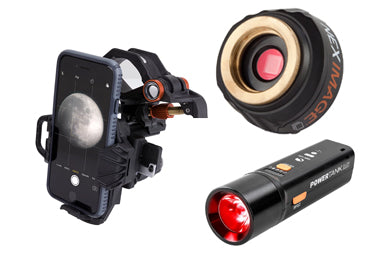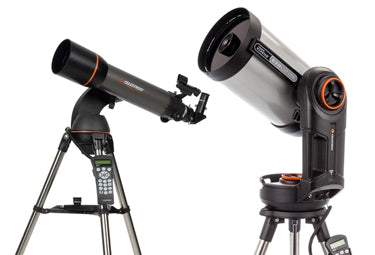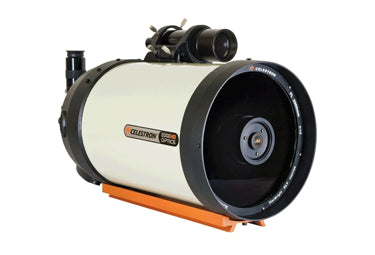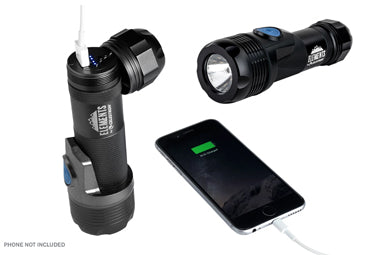Can We See the American Flags Left on the Moon by the Apollo Astronauts
June 30, 2023

Guests at public star parties often ask us, “Can we see the flags on the Moon erected by the Apollo astronauts over 50 years ago?” This question contains two questions within it. First, “Can we directly see the flags on the Moon with an Earthbound telescope?” and second, “Can we see the flags on the Moon with a space telescope?” Let’s tackle them one at a time.
Can we directly see the flags on the Moon with an Earthbound telescope?
The answer is no. The largest of the American flags on the Moon is the one left by Apollo 17. It spans six feet when unfurled. A target that small at the quarter million-mile lunar distance is beyond the reach of any Earthbound telescope, even the most sophisticated professional observatories equipped with state-of-the-art optics.
To show the limitations of Earthly telescopes in observing ultra-small detail on the Moon, well-known astronomer Yuri Beletsky at the European Southern Observatory in Chile conducted an experiment using an eight-meter adaptive optics telescope. He tried to visually spot the 150-foot-long shadow of one of the Apollo landing stages still resting on the Moon. His attempt failed, showing that viewing the flags, targets at least ten times smaller, is impossible with current technology.
Can we see the flags on the Moon with a space telescope?
What about space-based telescopes that don’t have to contend with such vast distances and the Earth’s atmosphere? Here we have better news. NASA’s Lunar Reconnaissance Orbiter (LRO) satellite, tasked with mapping the Moon’s surface from lunar orbit for a decade, does achieve sufficient resolution to spot the shadows of three Apollo flags. In fact, LRO’s cameras can see objects as small as 20 inches on the surface of the Moon, sufficient to positively identify the extended shadows streaming from the Apollo 12, 16, and 17 flags.
What happened to the six American flags on the Moon?
Why have we only seen three of the six flags American astronauts planted on the Moon? Let’s look at the status of the flags from the six Apollo expeditions that landed on the Moon between 1969 and 1972.
Buzz Aldrin saw the Apollo 11 flag blow over when the Lunar Module Eagle took off from the Moon on July 21st, 1969. Aldrin and fellow Moonwalker Neil Armstrong planted the flag just 27 feet from the centerline of the lunar lander. The flagpole did not withstand the rocket exhaust of liftoff. Subsequent missions placed the flag farther from the lander to ensure they remained upright.
The LRO images clearly show that the Apollo 12, 16, and 17 flags are still intact on their flagpoles after half a century of exposure to harsh lunar environments. While it is true that there is no wind and weather on the Moon to damage the flags, unfiltered solar radiation and temperature extremes have not been kind to the flags.
The LRO has not yet captured the shadows of the Apollo 14 and 15 flags, so their status remains unknown. The extremes of the lunar environment may explain why the shadows of the Apollo 14 and 15 flags have not yet been identified.
Since the astronauts first unfurled the flags, they have endured 600 cycles of broiling +100C two Earth-week-long lunar days and equally long frigid -150C lunar nights. Unfiltered solar ultraviolet radiation on the airless lunar surface has likely bleached all the flags white. The radiation has rendered the nylon thread in the flags very brittle, and the Apollo 14 and 15 flags may have disintegrated. However, LRO photography has positively confirmed the Apollo 12, 16, and 17 flags are still erect on the Moon.
More about the American flags on the Moon
There is nothing special or “high-tech” about the flags the Apollo astronauts left behind on the Moon. Except for the larger Apollo 17 flag, they are all ordinary three-by-five-foot nylon cloth flags ordered from a 1969 government supply catalog for $5.50 apiece. Since there is no wind on the Moon to make the flag wave, each of the Apollo flags was modified with a stitched hem at the top to accept a one-inch diameter horizontal tube to display the unfurled flag. Using gold anodized aluminum tubing, workers at the Johnson Space Center in Houston created a two-piece flagpole with a hinged latch at the top to support the horizontal display tube. Each of the lunar flag poles costs about $70. The lunar flags and their poles traveled to the Moon in an insulated tube attached to the landing stage of the lunar module. Engineers designed the tubes to withstand rocket exhaust temperatures that reached 2,000C in the final seconds before the lunar touchdown.
The Apollo 17 flag deserves special note because it is the only American flag to fly to the Moon twice. This larger, six-foot-wide flag initially flew to the Moon and back aboard Apollo 11, then hung on the wall in Houston’s Mission Control Center during Apollo 12 through 16. Finally, Apollo 17 returned the flag to the Moon, where astronauts Gene Cernan and Harrison Schmidt erected it in the Taurus-Littrow Valley. To date, the six American flags the Apollo astronauts raised are the only flags planted on another world by humans.
Many “old-timers” in astronomy remember the pride we felt during the heady days of the Apollo landings. We look up at the Moon with fond memories of how it lured us into this fascinating hobby. I do not hesitate to snap a sharp salute to the American flags on the Moon and look forward to the day, hopefully soon, when the flags of other nations proudly join the American flag on the Moon.
So can we see the flags on the Moon erected by the Apollo astronauts over 50 years ago? We cannot see the flags on the Moon with Earthbound telescopes, but we know they are still standing tall thanks to the Lunar Reconnaissance Orbiter.

The American flags erected on the Moon by the Apollo astronauts were off-the-shelf nylon flags supported by a gold-anodized aluminum flagpole pushed into the lunar soil by the astronauts. Photo courtesy of NASA

Buzz Aldrin stands beside the American flag erected at Tranquility Base on July 20th, 1969. Photo courtesy of NASA

Alan Bean holds up the American flag erected by Apollo 12 at Surveyor crater on Oceanus Procellarum on November 16th, 1969. Photo courtesy of NASA

The flag support bar latch failed on the Apollo 12 flag pole and remains forever collapsed on Oceanus Procellarum. Photo courtesy of NASA.

John Young leaps in the weak lunar gravity as he saluted the flag at the Apollo 16 landing site near Descartes crater on April 24th, 1972. Photo courtesy of NASA

Lunar Reconnaissance Orbiter cameras reveal the shadow of the Apollo 16 flag, showing it is still on the lunar surface. Photo courtesy of Arizona State University and NASA

The central yellow bar marks the location of the Apollo 16 flagpole in each photo as the changing sun angle shifts the flag’s shadow, showing the Apollo 16 flag is still standing after half a century. Photos courtesy of NASA
 |
 |
 |
This series of animations shows the Apollo 12, 16, and 17 landing sites at different times of the day as the American flag’s shadow shifts with varying sun angles. Animations courtesy of NASA

























